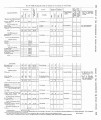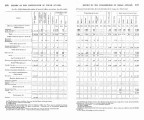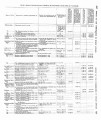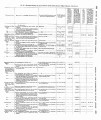| OCR Text |
Show 60 REPORT OF THE COMMISSIONER OF INDIAN AFFAIRS. WASIIINGTON TERRITOXY. The tribes residing in Washington Territory are the Nisqually, Puyal-lnp, and other confederate tribes ; the D'Wamish and other allied bands ; the Makahs; the S'Elallams; the Qni-nai-elts, and Qui-leh-ntes; the Yakamas ; the Oh&alis, and other allied tribes ; and the Colville, Spokanes, Caeur d'Al&nes, Okanagans, and others. Nisqthally, Puyallup, and ot11.ws.-These Indians, numbering about 1,200, have three reservations containing, as per treabg of 1854, 26,776 acres, situated on the Nisqually and Puyallup Rivers, and on an island inP11get Sound. Some of these Indians are engaged in farming, and raise considerable wheat, also potatoes and other vegetables. Many are employed by the farmers in their vicinity, while others still we idle and shiftless, spending their time wandering from place to place. One aohool is in operation on the Puyallup reservation, with an attendance of eleven scholars. Under the treaty of December 26, 1854, they are to receive aunna.11~f or a limited aeriod. (two installments clue.) $1.000 in beneficial objeccs; and are furnifshed Gikh im agricoltnral and'iud;istri;tl school, at a cost of $1,500 to the Government. and also mith teachers. physician, farmer, and ot,her employ6s, at an expense of $6,700 pei mnn1n. JY 1Vamish andothers.-The D'Wimish and other allied tribes uurul>er 3,600, and hare five reservations, containing in all 41,716 acres, set apart by treaty made with them in 1855, and looaced at as many points on Puget Sound. Many of these Indians, partioula,rly those residing on the Lummi reservation, are industrious farmers, raising all the pro-duce necessary for their support, and owning a large number of cattle, horses, bogs, &a. ; while others are either employed by the neighboring white farmers or enga.ged in lu~nberingonth eir own account. They are generally Christianized, most of them members ot'the Catholie Church. One school, with 57 scholars, is in operation on the Tulalip reservation, where all the Government buildings are located. This school has had a remarkable degree of success, au reported by the agent and by disin-terested visitors. Under the treaty of January 22, 1855, made wit,h these bauds, they are to receive annually for a limited number of years, in be~~eficiaolb iects. $6.000. (two installments due. after which thev ries and support of which cost the ~overnm~nt"annua1l$y~ 1 0 0 . Ma,kahs.-These Indians number 604, and have a reservation of 12.800 acres set anart bv treatv made mith them in 1855. and located a t ' t l~ec xtrernc ~~<i r t l~aeotr~l;enr t of rbc Trrrirory. 'IItri inl1.e :I bold, I~artlyr ace, ng,t incliued to till the roil fnra support, but drpenclittr 111inc.i 11a1lv ~~~,on. t i s la~nide ?th e rakineoi fur-at.:~lr ;tr their livrlih~,~~Od.l te A " school is in opcra%ioil among th&, with an attendance of 16 scholars. Under the treaty of January 31, 1855, tliby receive for a certainnumber of years (seven installments due,) $1,000 in beneficial objects, and are supplied with an agricultural and indust,rial school, at a cost of $2,500 annually, and with certain emplor6s and shops, the salaries and sup. port of which cost the Government $5,100 per annum. SKlaZla?~zs.-These Indians, nun~bering 919,,have a reservation of 4,000 acres, set apart by treaty made with them in 1855, and located on what is known as <E' ood'8 Canal.)' Some of them are eng-ag-ed ,. i n a small way, in farming, and others are employed in logging for the neighbor-ing saw-mills. Their condition generallj is such that their advance- |



































































































